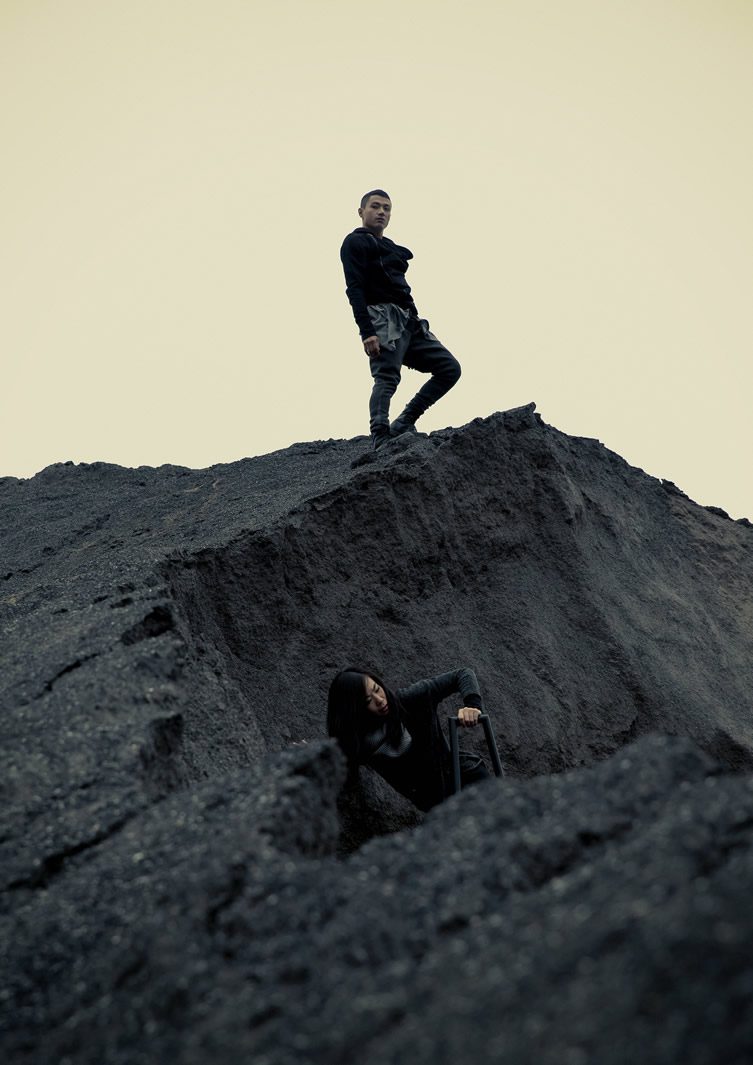The film Longing to Fly, Longing to Fall premiered during Stockholm Design Week. It’s an unusual and captivating collaboration of dance, music, furniture design and cinematography, directed and composed by Erika Janunger, produced and choreographed by Oskar Frisk, performed by César Garcia & Stacy Aung and featuring furniture designed by Fredrik Färg and Emma Marga Blanche. I spoke to Erika, Oscar and Emma about how it all came together…
Erika says, “In 2007 I made my first dance film project, Weightless, which was filmed at a 90 degree tilt. It was an idea that came to me by chance when I was photographing of a friend of mine who is a dancer. The movements the dancer came up with were so fascinating and surprising, that I have been longing to do more visual experiments at other angles ever since. I work as an interior architect but have attended dance classes since childhood, so I suppose that’s why I tend to ‘feel’ spaces and places with my own body.”
Despite my expectations to the contrary, Oskar assured me that choreography in a room-set constructed at a 23 degree angle came quite naturally: “Whenever you do a new piece, you need a framework to work within and in this project there was a new reality. Gravity was not as usual, and in every movement the dancer have to make a decision – do I go with gravity or against, do I fight gravity or do I give in? Making decisions in every movement is a very ordinary way to work as a dancer or a choreographer, but with the new gravity, everything just gets much more extreme. We had to watch every movement in a monitor so we could see what it would look like in the camera – some movements looked good in reality but not so nice in the camera and vice versa.”
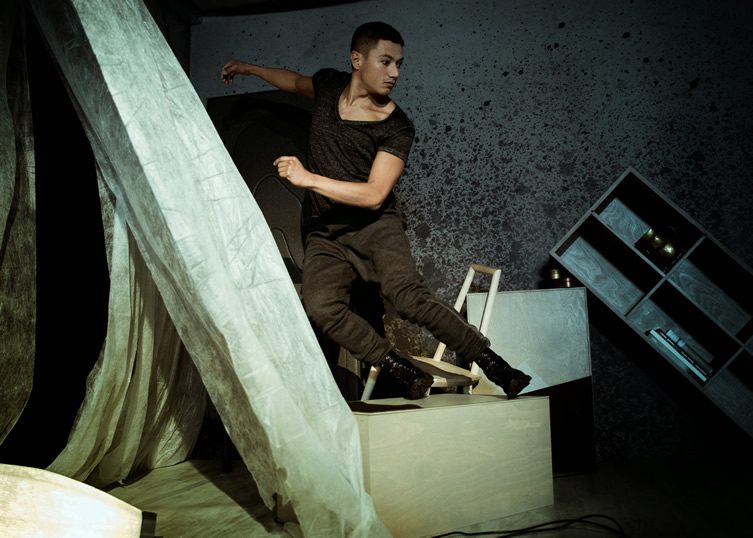
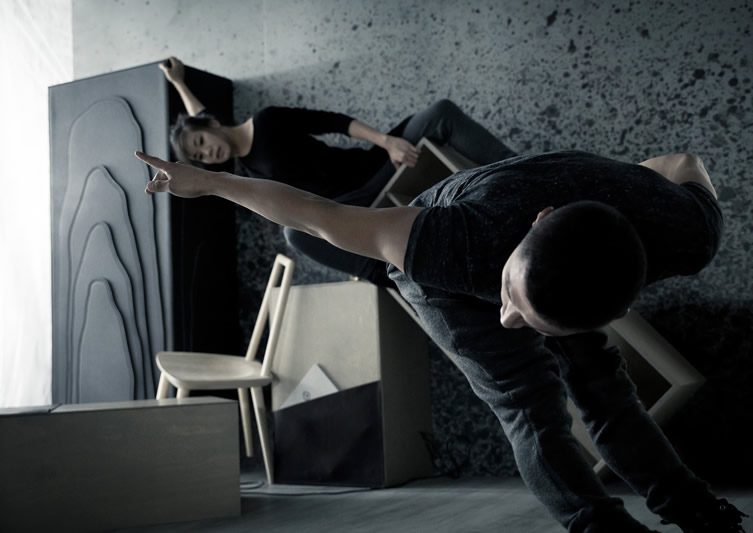
Erika says, “A piece of furniture is a kind of choreographer too, since it dictates your movement. The way you place furniture makes people move in certain ways. How you plan offices, or shops or any space you can think of – is a way to make people ‘dance to your music’. What I discovered when making Weightless is that watching other people move in relation to architecture and objects, affects how you perceive that room, and that the way you interpret someone’s movements are closely linked to how those movements relate to gravity.”
“And the dancers loved the challenge”, says Oskar. “Dancers are the most professional people on Earth – we have to be because of the hard competition in our business. We make extreme things look easy. The outside scenes were shoot in late October in Sweden, so it was very chilly. We made the dancers do things over and over again and they never complained once. This is the first time that Caesar and Stacey had worked together, and from the first second in the studio they worked really well together.”
Erika was keen to include furniture in the film as part of room set, but it couldn’t be just any furniture. She says, “I wanted this scenography to be something extraordinary and unique. The furniture would also have to be extremely durable, having two dancers climbing, and jumping on top of them, and also throwing them downhill. So having them custom made was truly ideal. Every piece of furniture or object that you put in a film like this carries a huge symbolism. It affects how you perceive the dancers, their personalities, their relationship, who they are and what they want. In this case, I let the scenography change along with the dancers relationship to each other, to make it truly visible.
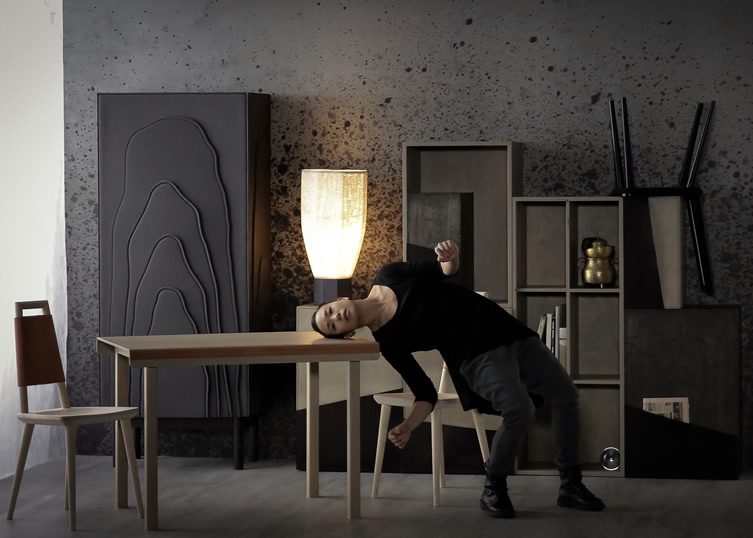
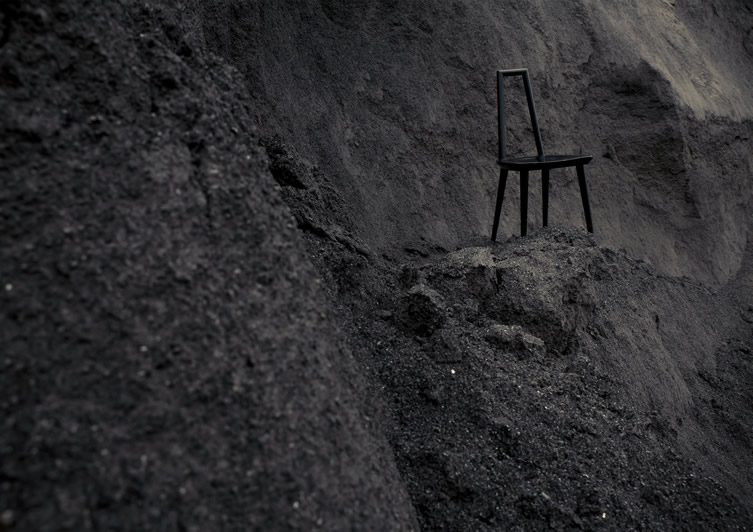
“I wanted to work with Emma and Fredrick because they are fantastic. They have the eye, the imagination, the ambition, and they are great people to work with. Their visual language was already very close to my vision for this film.”
Of being involved, Emma says, “It is fantastic to be part of another artist’s creative process. It gives us a lot of energy and freedom to do new things and explore new ways of working. It is really important for us to keep doing art projects and to stay open to a non-traditional way of working in design. It’s a great way for us to get inspiration. The brief that Erika gave us was all about emotions, feelings and symbols, rather than function, price and market. And of course normally we do not construct furniture that has to hold on a 23 degree outdoor sloop on a rainy day, and also look good in a home environment.”
All three of them speak of the captivating, almost hypnotic effect of the final film, and tell me that for 15 minutes it will transport you to another world, but it is Oskar’s description of the first time they saw it all come together that really captures it. He says, “In the studio when everything was set, we had worked so hard to get everything together, and then we got the dancers on to the set and they started move in the room, it was magical. Everyone just stopped where they were and stared for fifteen minutes. It was so beautiful. I remember Erika had tears running down her cheeks. That was the moment we realised this would really work.”
Watch the full 14 minute version of Longing to Fly, Longing to Fall here.
***
